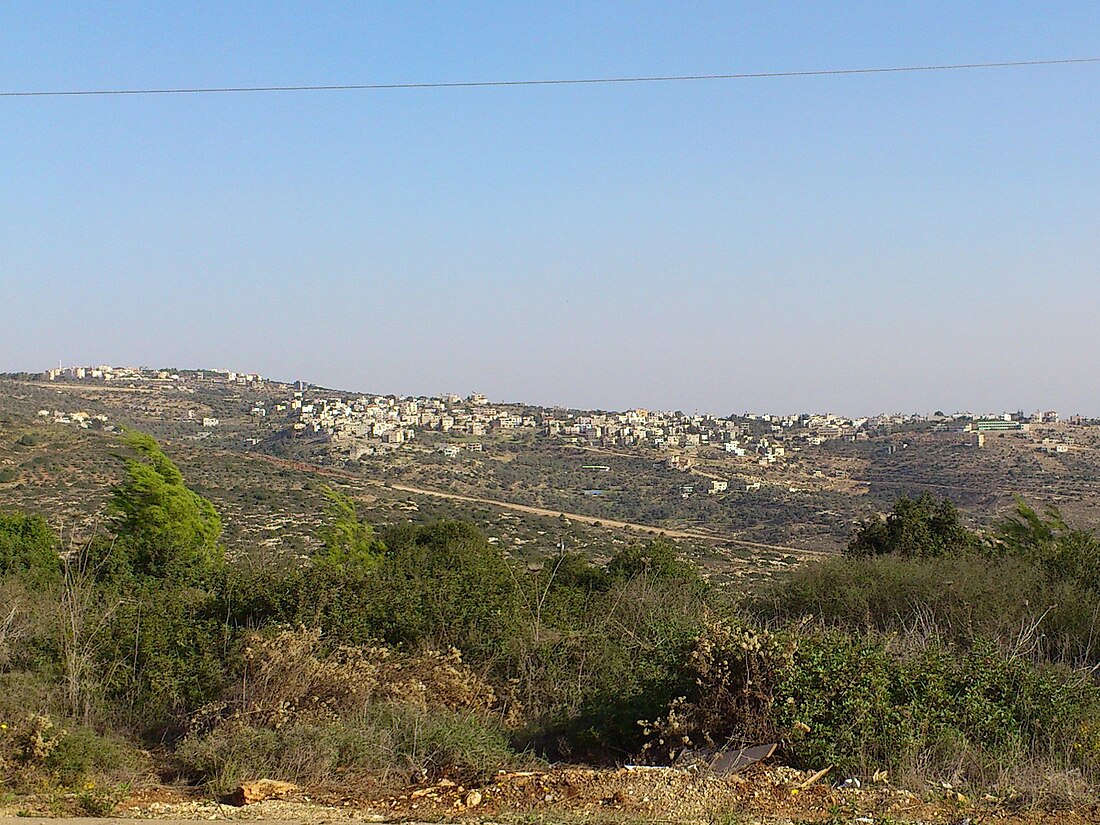Top Qs
Timeline
Chat
Perspective
'Anin
Municipality type D in Jenin, State of Palestine From Wikipedia, the free encyclopedia
Remove ads
'Anin (Arabic: عانين) is a Palestinian village in the West Bank governorate of Jenin. According to the Palestinian Central Bureau of Statistics, the village had a population of 4,216 inhabitants in 2017.[2]
Remove ads
History
Summarize
Perspective
Potsherds from Iron Age I,[3] IA II,[3] Persian,[3] early and late Roman,[3] Byzantine,[3] early Muslim and the Middle Ages have been found here.[3]
"Immediately north of the village is a rock-cut passage large enough to walk along, extending about 50 feet and lined with cement; it then becomes about a foot high. This leads out on to a flat surface of rock.(...) Two rock-cut tombs, now blocked, exist west of this."[4][5]
Ottoman era
In 1517 'Anin was incorporated into the Ottoman Empire with the rest of Palestine. During the 16th and 17th centuries, it belonged to the Turabay Emirate (1517-1683), which encompassed also the Jezreel Valley, Haifa, Jenin, Beit She'an Valley, northern Jabal Nablus, Bilad al-Ruha/Ramot Menashe, and the northern part of the Sharon plain.[6][7] In the census of 1596 it was a part of the nahiya ("subdistrict") of Sahil Atlit which was under the administration of the liwa ("district") of Lajjun. The village had a population of 16 households, all Muslim. The villagers paid a fixed tax rate of 25% on wheat, barley, summer crops, olive trees, in addition to occasional revenues and a press for olive oil or grape syrup; a total of 3,600 akçe.[8] Potsherds from the Ottoman era have also been found here.[3]
In 1870/1871 (1288 AH), an Ottoman census listed the village in the nahiya of Shafa al-Gharby.[9]
In 1882, the PEF's Survey of Western Palestine described Anin as: "a small village on a ridge, partly built of stone, with a small olive grove beneath it on the west, and two wells on that side. It has the appearance of an ancient site, having rock-cut tombs, and a curious channel for water."[10]
British mandate era
In the 1922 census of Palestine, conducted by the British Mandate authorities, the village had a population of 360 Muslims,[11] increasing in the 1931 census to 447 Muslims, in 68 houses.[12]
In the 1944/5 statistics the population of Anin was 590 Muslims,[13] with a total of 15,049 dunams of land, according to an official land and population survey.[14] Of this, 1,769 dunams were used for plantations and irrigable land, 1,806 dunams for cereals,[15] while 13 dunams were built-up (urban) land.[16]
Jordanian era
After the 1948 Arab-Israeli War, 'Anin came under Jordanian rule.
The Jordanian census of 1961 found 752 inhabitants.[17]
Post-1967
'Anin has been under Israeli control along with the rest of the West Bank since the 1967 Six-Day War.
Remove ads
References
Bibliography
External links
Wikiwand - on
Seamless Wikipedia browsing. On steroids.
Remove ads


